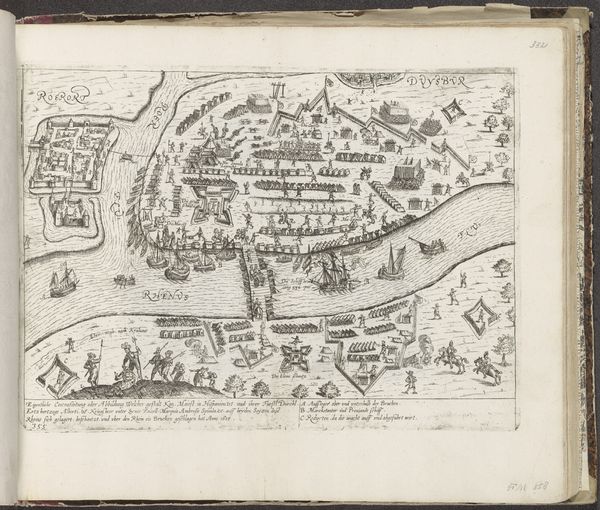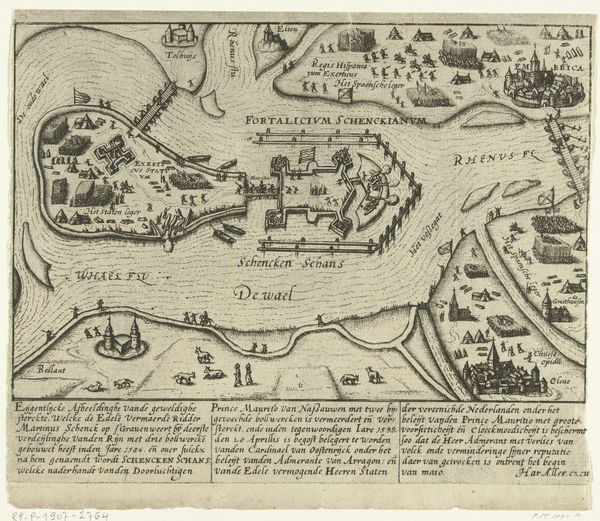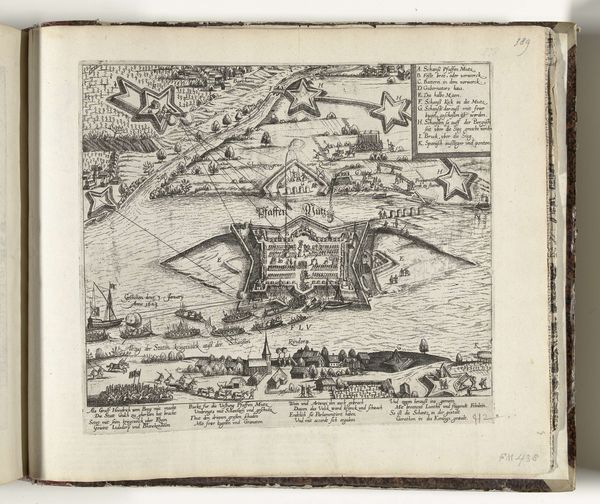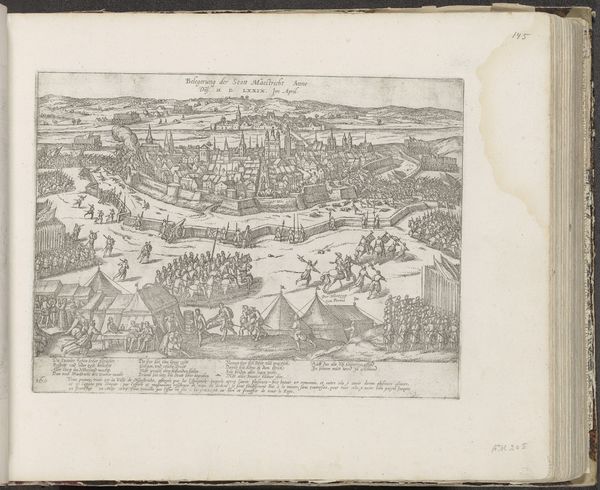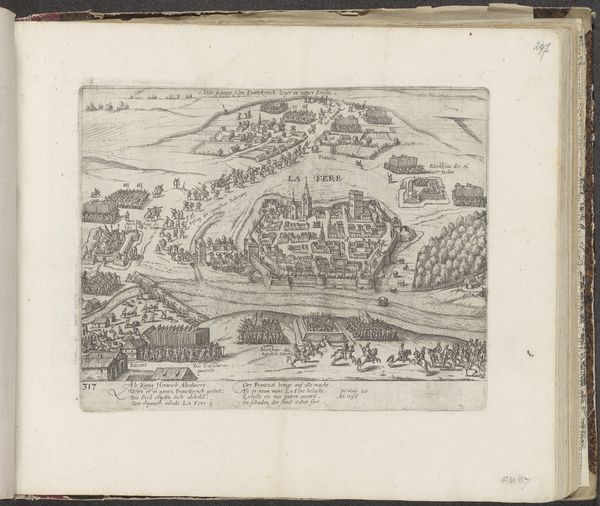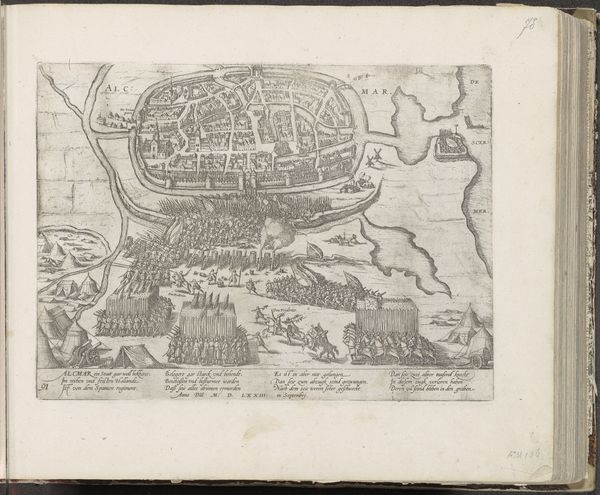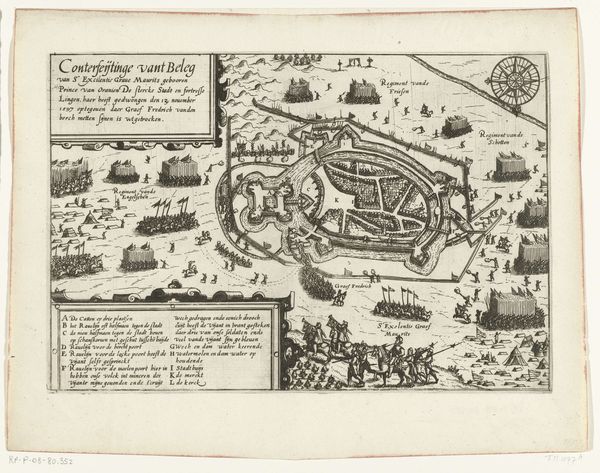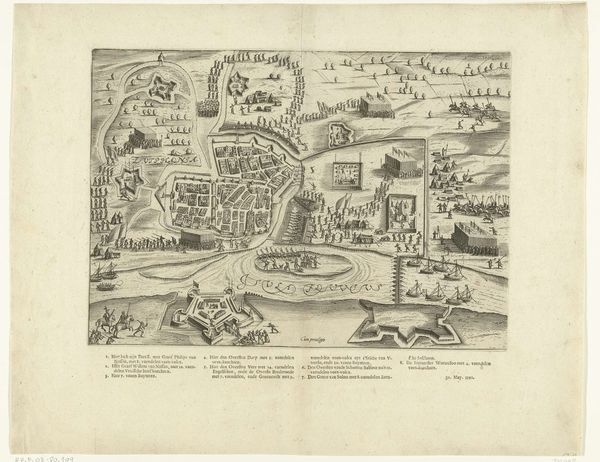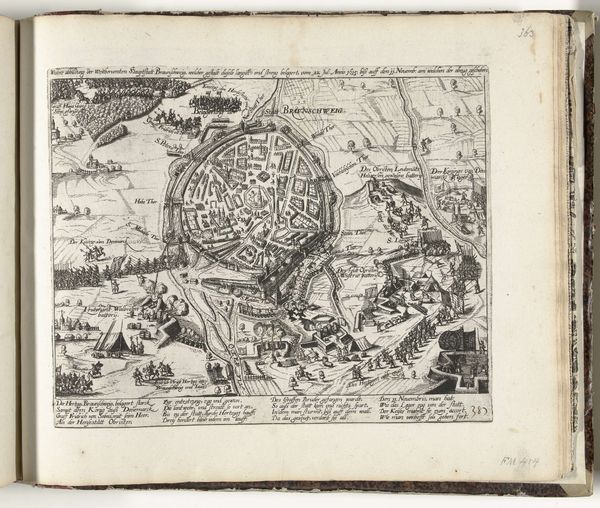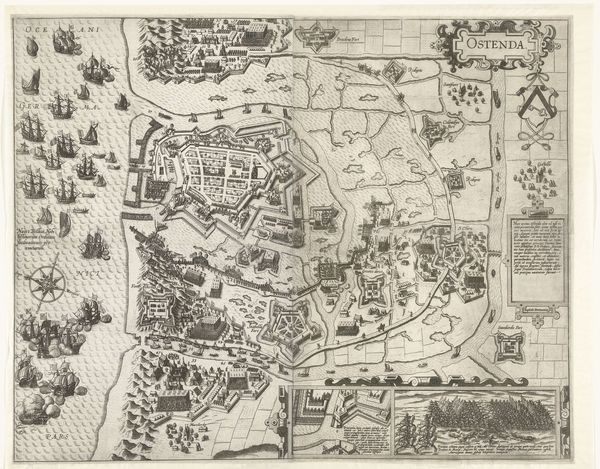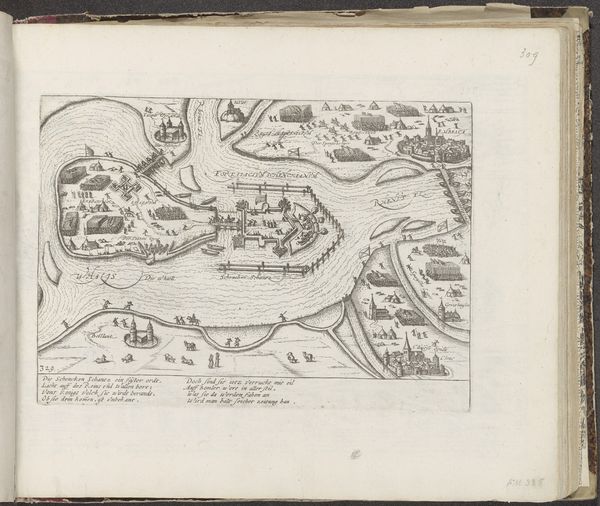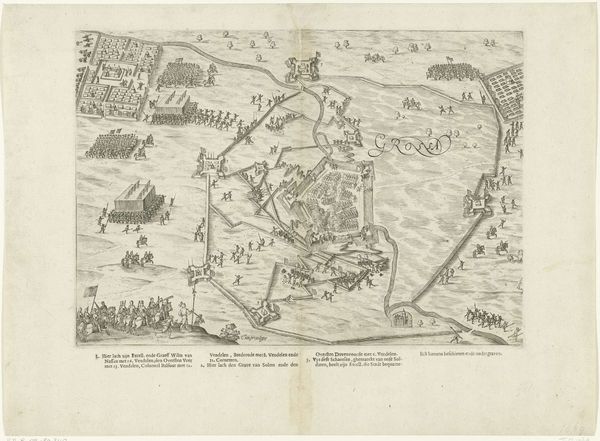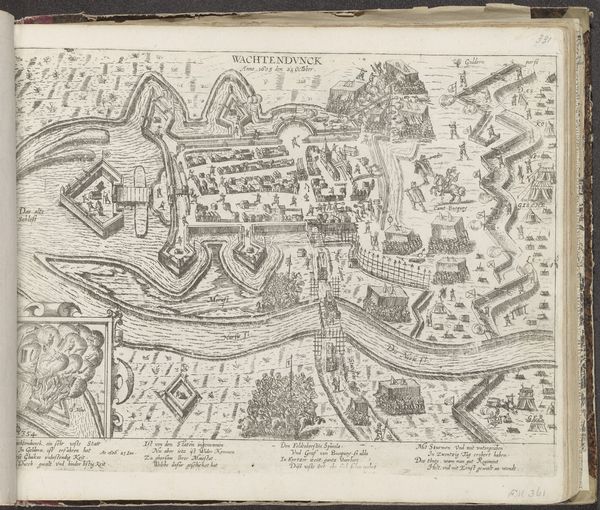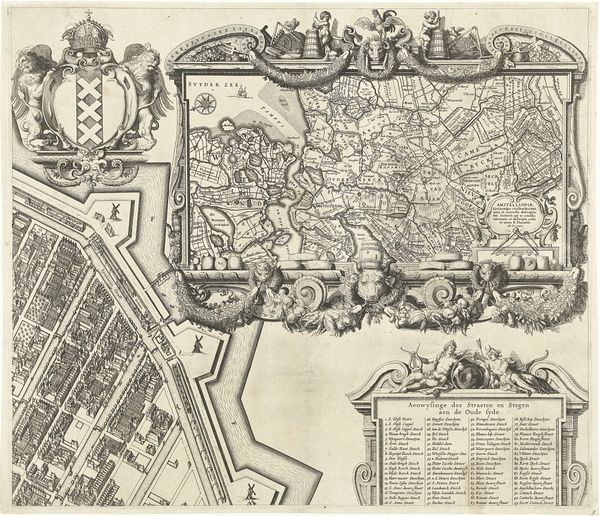
print, ink, engraving
#
baroque
# print
#
ink
#
cityscape
#
history-painting
#
engraving
Dimensions: height 247 mm, width 303 mm
Copyright: Rijks Museum: Open Domain
Curator: Frans Hogenberg created this engraving titled "Siege and Conquest of Bautzen, 1620" sometime between 1620 and 1622. The piece, rendered in ink, currently resides here at the Rijksmuseum. Editor: Wow. First impression? Overwhelming. It's like a fever dream laid out on paper. This chaotic jumble of lines, bodies, and tiny buildings… it's almost beautiful in its madness, no? Curator: Absolutely. It reflects the frenetic energy of a siege during the Thirty Years' War, an incredibly turbulent period. What stands out to me is how Hogenberg presents a panoramic, almost godlike perspective. Editor: Godlike… yeah, I can see that. Makes me feel tiny looking at it. Almost like peering into an ant farm—a very violent, politically charged ant farm. You get a sense of how insignificant each individual life must have felt. The scale is deceptive; it appears neat and organized from afar, yet zoom in and it's total mayhem! Curator: Exactly. Each line represents conflict, negotiation, power struggles within broader social, religious, and political shifts. The topography itself plays a role – observe the river Spree and the surrounding hills; control of resources and land was paramount. And we see those narratives unfolding. Editor: It’s kind of like history has been flattened. All the stages of the siege mashed into one image. The tiny soldiers swarming the walls, the river dividing space— it creates this bizarre tension between beauty and brutality. Tell me, who were these guys in Sachsen doing all the conquering anyway? Curator: Electorate of Saxony who had allied with the Habsburgs, their conquest consolidating territory during the Thirty Years War. Editor: So, this isn't just a pretty picture… it’s an infographic of power, created in its moment. And it reminds you that no one is free from this chaotic clash. I like that, like art has so many faces here. Curator: It really invites us to think critically about the relationship between conflict, representation, and power itself. The legacy it continues to shape in understanding European history. Editor: Well, now that I understand some backstory here. Curator: My thoughts, exactly. Thank you for your insights! Editor: Thank you for walking me through these interesting tidbits.
Comments
No comments
Be the first to comment and join the conversation on the ultimate creative platform.
